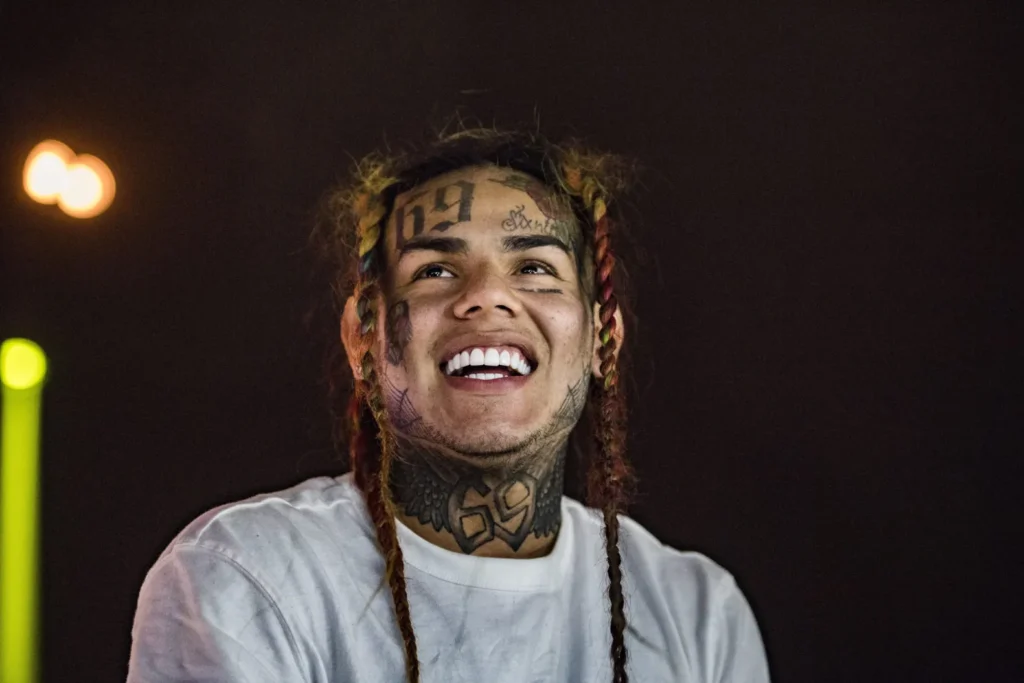Tekashi 69 Ethnicity: Tekashi 69 continues to make waves in the entertainment world as an American rapper, fans and curious onlookers alike find themselves drawn to the details of her personal life, particularly her ethnic heritage. In a landscape where diversity is celebrated, understanding Tekashi 69’s ethnicity adds another layer to her persona and artistic identity. So, if you’re eager to uncover more about the roots that shape this influential figure, stay tuned as we explore the intriguing aspects of Tekashi 69’s ethnicity.
Tekashi 69 Ethnicity

Tekashi 69 is of mixed ethnicity mother is Mexican American and father Puerto Rican. Tekashi 69 is known for his tough rap style and his bold look with colorful hair and lots of tattoos. He’s been in trouble with the law a lot and has had public fights with famous people. He got noticed after singing on Trippie Redd’s song “Poles 1469” in 2017, then had his own hit with “Gummo.”
His first mixtape, “Day69,” had more hit songs like “Kooda,” “Keke” (with Fetty Wap and A Boogie wit da Hoodie), and “Gotti.” His debut album, “Dummy Boy,” had a song called “Fefe” with Nicki Minaj that did well. Even though critics didn’t like it, “Dummy Boy” still sold a lot of copies and got platinum certification.
He got into big trouble in 2015 for doing something bad involving a child and was put on probation and community service. Then in 2018, he was arrested for serious crimes like racketeering and drugs. He pleaded guilty to some charges and helped the police catch other bad guys. He was sentenced to two years in prison but was let out early because of COVID-19.
After he got out, he had some hit songs like “Gooba” and “Trollz” with Nicki Minaj. His second album, “TattleTales,” did okay, but his third album, “Leyenda Viva,” didn’t do well worldwide. Many people in the hip-hop world stopped supporting him because he worked with the police, which hurt his reputation a lot.
Mallory Swanson Ethnicity: Her Ethnic Background Examined!
The Story of Tekashi 69 Family Background

Daniel Hernandez, known as Tekashi 69, was born on May 8, 1996, in Brooklyn, New York City. His parents, Natividad Perez-Hernandez and Daniel Hernandez Sr., hail from Mexico and Puerto Rico, respectively. Hernandez’s mother immigrated to the U.S. in 1988 to seek better opportunities.
Raised in a church environment, he sang during mass and often read from the Bible, favoring Psalm 121. Despite his early talents, he faced hardships, including his father’s absence due to drug addiction and incarceration, and the tragic murder of his stepfather in 2010. Financial struggles led Hernandez and his brother to face hunger and wear secondhand clothes.
The trauma of his stepfather’s death led to emotional issues, resulting in therapy and hospitalization for depression and post-traumatic stress disorder. Hernandez’s disruptive behavior led to his expulsion from school in 8th grade, after which he took on various jobs to support his family instead of pursuing further education.
Tessa Johnson Ethnicity: Tracing Her Ethnic Heritage!
Summary
Tekashi 69, a rapper with a bold style, has a mixed background. His mom is Mexican American, and his dad is Puerto Rican American. Known for his tough rap and colorful appearance, he faced legal issues, including arrests in 2018. Despite setbacks, he continued to release hit songs like “Gooba” and “Trollz.”
Born Daniel Hernandez in 1996 in Brooklyn, he had a tough upbringing, dealing with financial struggles and family tragedies. Despite challenges, he found success in music, though some in the hip-hop community criticized him for working with the police.
Stacey Addison is a passionate journalist with a keen eye for uncovering the multicultural tapestry woven through the lives of celebrities. With a background in cultural studies and journalism, she brings a unique perspective to her writing, delving deep into the heritage and ethnicity of renowned figures. Stacey’s articles on Celeb Ethnicity offer readers a glimpse into the rich and diverse backgrounds of their favorite stars.
Stacey enjoys immersing herself in different cultures through travel, sampling various cuisines, and attending cultural events. In her free time, you can often find her exploring local markets, practicing photography, or indulging in a good book on world history.





